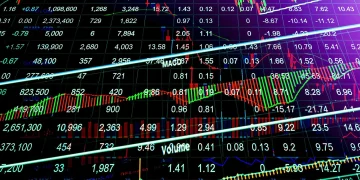For more than a decade, the global equity landscape has been dominated by one clear winner: the United States. Wall Street’s growth-fueled juggernaut, led by tech megacaps and powered by aggressive monetary policy, has consistently left European stocks in the rearview mirror. But in 2024 and beyond, market sentiment is shifting. As the Federal Reserve tightens policy and growth stocks wobble under higher rates, investors are asking an increasingly relevant question: can European equities finally outpace U.S. stocks?
The Decade of Disparity: How the U.S. Pulled Ahead
To understand the possibility of a reversal, we must first unpack the long-standing divergence. Since the aftermath of the 2008 financial crisis, U.S. stocks—represented by the S&P 500—have returned more than 400%, while Europe’s Stoxx 600 has lagged behind at just under 150%. The drivers are well known: a tech-heavy U.S. market that reaped the rewards of digital transformation, ultraloose monetary policy, and corporate dynamism.
U.S. firms leveraged low interest rates to finance growth, engage in aggressive buybacks, and expand globally. FAANG stocks morphed into market leviathans, collectively worth trillions. Meanwhile, Europe’s equity markets remained tilted toward “old economy” sectors—banks, utilities, autos—offering less upside in a world racing toward digitization.
Structural issues also played a role. Fragmented markets, political uncertainty (Brexit, anyone?), and sluggish GDP growth further eroded investor enthusiasm for Europe. The eurozone’s debt overhang and weaker banking system made policy response slower and less coordinated. While the U.S. leaned into capitalism with confidence, Europe appeared more cautious, bureaucratic, and demographically burdened.
Valuation Gap: An Opportunity Hiding in Plain Sight?
Yet within this underperformance lies a paradox: European equities are cheap—perhaps unjustifiably so. On a forward price-to-earnings (P/E) basis, the Stoxx 600 trades at around 13x earnings, while the S&P 500 commands a premium near 20x. Some sectors, like European industrials and financials, are even cheaper, with valuations hovering at 10x or less.
Historically, such wide valuation gaps tend to revert over time. And unlike the past, this time the fundamentals might finally align with valuation tailwinds. European companies have cleaned up balance sheets, improved shareholder returns, and invested heavily in automation, AI, and energy transition. The old narrative—Europe as a value trap—may no longer hold.
In fact, recent data shows European earnings resilience surprising to the upside. German export strength, French luxury’s global appeal, and Nordic tech innovation have all contributed to stabilizing EPS growth. Companies like ASML, LVMH, Siemens, and SAP are increasingly being re-rated by international investors looking for global champions outside the U.S.
The Central Bank Divide: Fed vs ECB
Monetary policy may prove to be the most pivotal differentiator in 2025. The Federal Reserve, after hiking rates aggressively to tame inflation, remains in hawkish territory despite market expectations for eventual cuts. High real yields and a strong dollar are weighing on U.S. equities, particularly long-duration growth stocks.
In contrast, the European Central Bank (ECB) is signaling more dovishness. Inflation in the eurozone has decelerated more sharply, driven by falling energy prices and weakening consumer demand. As a result, rate cuts may arrive sooner and deeper than in the U.S., potentially supporting equity valuations.
ECB President Christine Lagarde has emphasized a “data-dependent but growth-sensitive” stance, suggesting more flexibility than the Fed’s inflation-first doctrine. If the ECB does begin easing earlier, European equities—especially rate-sensitive sectors like real estate, banks, and industrials—could receive a meaningful boost.
Currency dynamics also matter. A softening euro would typically hurt eurozone assets, but in a globally deflationary environment, it may enhance export competitiveness and inflate earnings from overseas operations. For multinationals like Airbus or Nestlé, this currency tailwind could be significant.
Sector Rotation: The Rise of Europe’s Strategic Edge
Sector composition is a key lens through which the performance gap can be reevaluated. U.S. equity indices are tech-dominated—almost 30% of the S&P 500 is concentrated in just a handful of companies like Apple, Microsoft, Nvidia, and Alphabet. This makes the market vulnerable to sector-specific shocks or regulatory risk.
Europe, on the other hand, is seeing a renaissance in sectors that are gaining strategic relevance. Take energy: with the global focus on decarbonization and supply security post-Ukraine, European renewables, utilities, and green infrastructure firms are at the forefront. Spain’s Iberdrola, Denmark’s Ørsted, and Germany’s Siemens Energy are quietly becoming leaders in clean transition.
The luxury goods sector, anchored in France and Italy, continues to defy gravity. Despite global economic uncertainties, demand for Hermes, Gucci, and Ferrari remains resilient, fueled by aspirational consumption in Asia and the Middle East. These firms combine strong pricing power, global margins, and loyal customer bases—attributes any U.S. growth investor would admire.
European industrials are also gaining relevance. From robotics to aerospace to automation, companies like ABB, Schneider Electric, and Dassault Systèmes are capitalizing on global re-industrialization, supply chain reshoring, and digitization. These are not sleepy conglomerates—they are innovation-driven exporters with strong governance and ESG alignment.

Geopolitical Realignment: A European Advantage?
In the new era of geopolitical multipolarity, Europe’s relative neutrality is emerging as a surprising strength. While U.S.-China tensions have escalated, threatening cross-border investments and technological cooperation, Europe has maintained trade ties across blocs. This allows European multinationals to access both Western and Eastern markets without as much scrutiny or restriction.
Moreover, the EU’s firm stance on regulation—often viewed as a business hurdle—may now be seen as foresight. GDPR, antitrust enforcement, and sustainability mandates, once derided as overreach, are now templates for global governance. European firms have been battle-tested in complex compliance environments, preparing them for a more regulated global market.
The EU’s €800 billion recovery fund, NextGenerationEU, is also starting to show results. Infrastructure, digitalization, and energy transition projects across southern Europe are unlocking demand and improving business conditions in formerly stagnant economies like Spain, Italy, and Greece.
Expert Views: Is the Rotation Already Underway?
Many institutional investors are beginning to act. Amundi, Europe’s largest asset manager, increased its European equity exposure in Q1 2024, citing “a turning tide in relative performance.” Goldman Sachs recently noted that the region’s underperformance may be “overdone and due for structural re-rating.”
BlackRock’s 2024 outlook also highlighted Europe’s favorable valuation, strong dividend yields, and improving macro stability. Strategists at UBS point to the underappreciated strength of European corporate balance sheets, which now boast lower leverage than U.S. counterparts for the first time in decades.
In terms of fund flows, EPFR data shows three consecutive quarters of net inflows into European equity mutual funds—breaking a multi-year trend of capital flight. Retail investors, too, are waking up to the possibility that Europe is more than just a contrarian bet—it may be a value rotation in motion.
Risks Still Linger: Don’t Call It a Comeback Yet
Of course, no thesis is bulletproof. Europe still faces structural headwinds. Its demographic decline is faster than that of the U.S., and labor market rigidity remains a hurdle for productivity growth. Political fragmentation—from populist surges to policy gridlock—continues to test the EU project.
Moreover, should the U.S. enter a soft landing, the tech sector could regain dominance, narrowing Europe’s relative advantage. A sudden energy price spike or renewed conflict in Ukraine could also derail sentiment across the continent.
Finally, Europe’s reliance on external demand remains a vulnerability. A Chinese hard landing or U.S. consumer retrenchment would disproportionately impact export-driven economies like Germany and the Netherlands.
Conclusion: The Case for a New Chapter in Global Allocation
Despite the risks, the balance of probabilities suggests that European equities deserve a closer look. They are no longer just cheap—they are increasingly relevant, strategically aligned with global shifts, and primed for revaluation. As monetary policy diverges and sector dynamics shift, Europe’s unloved stocks may finally get their moment in the sun.
For global investors weary of high U.S. multiples and overexposure to a handful of tech giants, Europe offers something valuable: diversification with upside. Whether this outperformance materializes in 2025 or takes longer to unfold, one thing is clear—Europe is no longer just the laggard. It may soon be the leader.


































